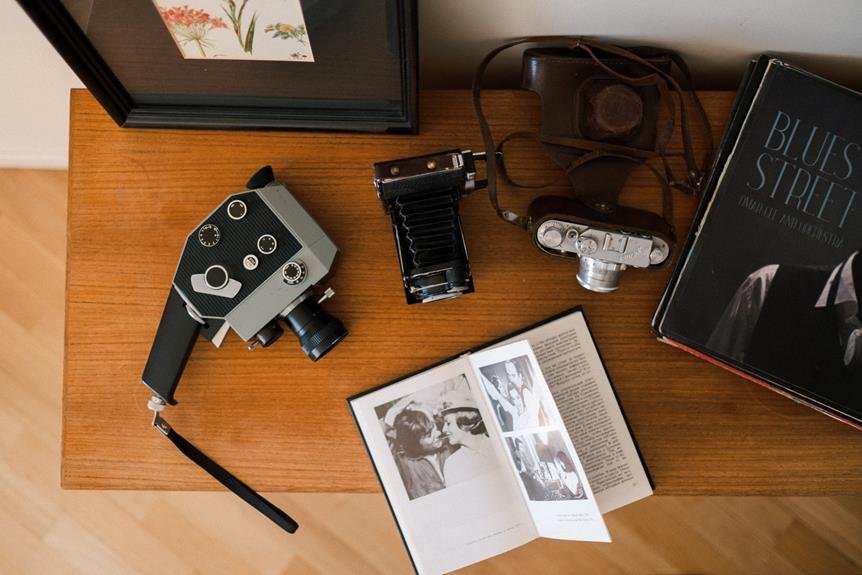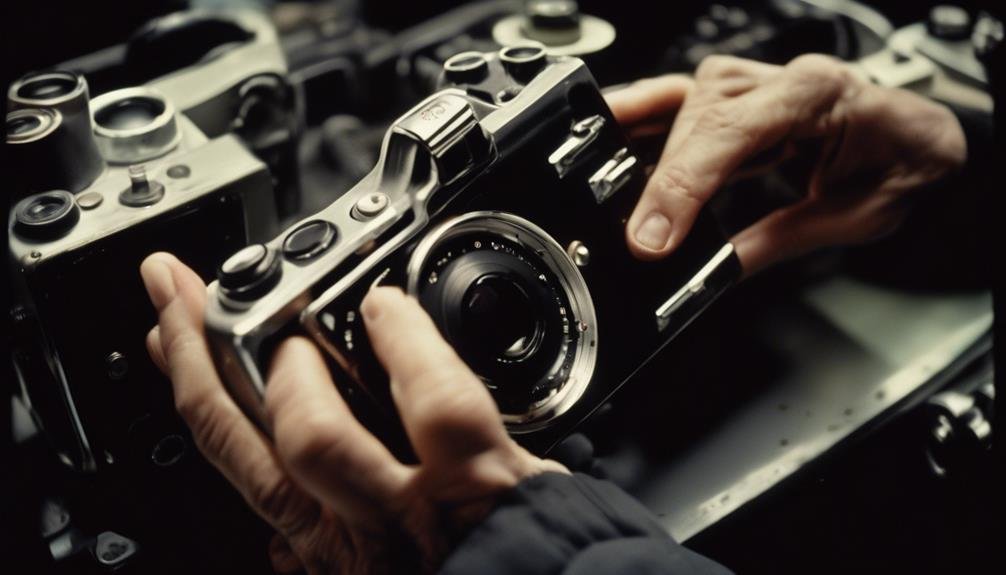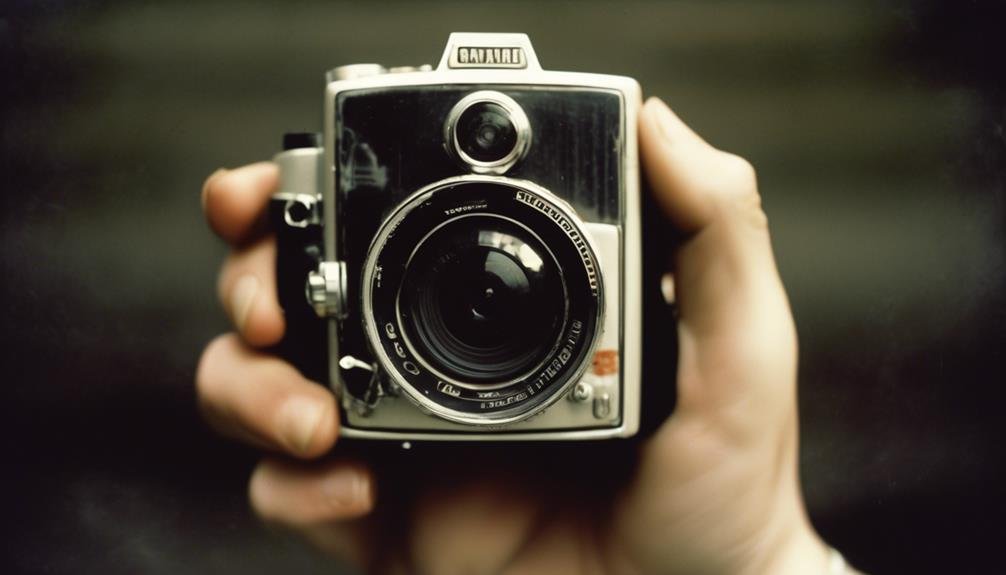
When it comes to using image stabilization in cameras, it's like having a steady hand in a world of subtle movements. We've all been there – capturing a perfect moment only to realize later that our hands weren't as steady as we thought. That's where image stabilization comes in, offering a way to minimize the impact of shaky hands or sudden movements. But it's not just a matter of turning it on and hoping for the best. There are specific techniques and settings that can make a world of difference in the quality of your photos and videos. So, how can you make the most of this technology to truly elevate your photography game? Well, let's just say there are six key tips that can take your image stabilization skills to the next level.
Understanding Image Stabilization Technology
Image stabilization technology, found in many modern cameras, helps reduce the blurriness caused by camera shake, resulting in sharper and clearer images. Stabilization techniques are crucial for compensating for unwanted camera movement, ensuring that the images captured are of the highest quality. There are primarily two types of image stabilization technologies: optical and digital. Optical stabilization works by physically moving lens elements to counteract the motion, while digital stabilization uses software algorithms to correct the image. Both techniques are designed to minimize the impact of camera movement, whether it's caused by hand tremors or other external factors.
Understanding how camera movement affects image quality is essential for appreciating the significance of image stabilization technology. Even the slightest movement during image capture can lead to noticeable blurring, especially in low light conditions or when using telephoto lenses. Image stabilization addresses these challenges, allowing photographers to achieve sharp and crisp images even in challenging shooting scenarios. By effectively mitigating the impact of camera movement, image stabilization opens up new opportunities for capturing stunning photographs and videos.
Choosing the Right Image Stabilization Mode
When it comes to using image stabilization in cameras, understanding the different modes is key to capturing clear and sharp images. We'll explore the various mode options and how they affect the effectiveness of stabilization. Making the right mode selection can significantly impact the quality of your photographs, so let's delve into the details.
Mode Selection
After testing various image stabilization modes, we found that selecting the right mode can significantly improve the sharpness and clarity of your photos and videos. When choosing the image stabilization mode, consider the specific shooting conditions and your desired outcome. For handheld shooting, utilizing the mode accuracy is crucial. This mode is designed to compensate for small, rapid movements, providing effective stabilization when shooting without a tripod. In situations where you require more freedom of movement, such as when capturing moving subjects, consider using a mode that allows for slight panning while still stabilizing vertical and horizontal movements. Understanding and selecting the appropriate mode for each shooting scenario can make a remarkable difference in the overall quality of your imagery. Keep experimenting and adjusting the mode selection to optimize your camera's image stabilization capabilities.
Understanding Effectiveness
As we tested various image stabilization modes and their impact on photo and video quality, we discovered that selecting the appropriate mode is crucial for achieving sharper and clearer imagery in different shooting conditions. Understanding the effectiveness of each mode involves thorough performance measurement and evaluation. For example, in situations where there is minimal movement, a different mode may be more effective compared to shooting in fast-paced environments. By assessing the specific requirements of each shooting scenario, we can determine which image stabilization mode best suits the conditions, thereby maximizing its effectiveness. This approach allows for optimal utilization of the camera's capabilities, resulting in superior image and video quality. Through meticulous effectiveness evaluation and performance measurement, photographers and videographers can harness the full potential of image stabilization to capture stunning visuals.
Adjusting Image Stabilization Settings

To optimize image stabilization settings in your camera, it's important to understand how different settings can impact the quality of your photos and videos. Custom settings and fine-tuning are essential for getting the most out of image stabilization. Some practical applications of adjusting these settings include scenarios like shooting fast-moving subjects or capturing video while walking. For example, when photographing a moving subject, such as a runner, adjusting the image stabilization settings to prioritize horizontal stabilization can make a noticeable difference in the sharpness of the final image.
Real-life examples of fine-tuning image stabilization settings could involve adjusting the panning speed for smoother video recordings or customizing the stabilization for specific focal lengths. For instance, when shooting handheld video with a zoom lens, adjusting the stabilization settings to correspond with the focal length being used can greatly improve the overall stability of the footage. By experimenting with different custom settings and fine-tuning adjustments, you can discover the optimal configurations for various shooting conditions, ultimately enhancing the quality of your photographs and videos.
Utilizing Image Stabilization for Video
When it comes to shooting video, utilizing image stabilization can make a significant difference in the quality of the footage. We'll explore the benefits of using image stabilization for video, the different types of stabilization available, and the best practices for getting the most out of this feature. Understanding these points will help us capture smoother, more professional-looking videos.
Benefits for Video
Image stabilization in cameras provides a significant advantage for video recording, ensuring smooth and steady footage even in dynamic or challenging filming environments. By improving footage stability and reducing camera shake, image stabilization technology allows videographers to capture professional-looking videos without the need for expensive stabilizing equipment. This feature is particularly beneficial for handheld shooting, as it compensates for small movements and vibrations, resulting in a more polished end product. Whether filming action sequences, panning shots, or capturing footage in low light conditions, the use of image stabilization enhances the overall quality of the video. It allows for greater flexibility in shooting locations and reduces the likelihood of producing shaky or blurry content. Ultimately, incorporating image stabilization in video recording empowers creators to achieve impressive, cinema-quality results with ease.
Types of Stabilization
Utilizing image stabilization for video involves exploring various types of stabilization technologies that enhance the smoothness and steadiness of footage, providing videographers with versatile tools to achieve professional-quality results. Optical stabilization, also known as optical image stabilization (OIS), functions by using physical lens elements to counteract camera movement. This mechanism helps to reduce motion blur and shaky footage, resulting in clearer and more stable video. On the other hand, digital stabilization processes the video after it's been captured, using software algorithms to minimize the effects of camera shake. While both methods aim to improve the quality of video recordings, each has its unique benefits and limitations. Understanding the distinctions between optical and digital stabilization can assist videographers in selecting the most suitable technology for their specific filming requirements.
Best Practices
To achieve optimal results when using image stabilization for video, it's essential to understand and implement best practices that enhance the quality and steadiness of footage. Proper technique is crucial for maximizing the benefits of image stabilization. When shooting, it's important to hold the camera steady and move smoothly to allow the stabilization system to work effectively. Additionally, testing effectiveness is key to ensuring that the stabilization feature is functioning as intended. This can be done by capturing test footage in different scenarios and analyzing the results to make necessary adjustments. By adhering to proper technique and regularly testing the effectiveness of image stabilization, videographers can elevate the quality of their video content.
| Best Practices for Image Stabilization |
|---|
| 1. Hold the camera steady |
| 2. Move smoothly |
| 3. Test effectiveness regularly |
Maximizing Image Stabilization in Low Light
In low light conditions, achieving maximum image stabilization can be challenging but is crucial for capturing clear, sharp photos and avoiding motion blur. When faced with low light techniques, it's essential to optimize image stabilization to overcome stabilization challenges and produce high-quality images. To maximize image stabilization in low light, consider the following:
- Use a tripod or monopod: When shooting in low light, a stable support like a tripod or monopod can greatly enhance image stabilization. It minimizes camera shake, allowing for longer exposure times without sacrificing image quality.
- Adjust ISO and aperture settings: In low light situations, adjusting the ISO and aperture settings can help maintain image stabilization. Increasing the ISO sensitivity or widening the aperture allows more light to reach the camera sensor, reducing the need for slower shutter speeds which can introduce blur.
- Leverage image stabilization technology: Many modern cameras and lenses are equipped with advanced image stabilization technology. Utilize this feature to its fullest potential by understanding the specific stabilization modes available and selecting the most suitable one for low light conditions.
Evaluating Image Stabilization Performance

When assessing image stabilization performance in cameras, it's crucial to consider its impact on capturing clear, steady shots in various shooting conditions. Evaluating performance involves testing techniques to gauge the effectiveness of the image stabilization system. One common method is to conduct tests at different focal lengths and shutter speeds to observe how well the system compensates for camera shake. Another approach is to compare images taken with and without image stabilization enabled to assess the difference in sharpness and clarity. Additionally, testing the performance in low light conditions and during panning movements can provide valuable insights into the system's capabilities. Evaluating image stabilization performance also involves considering the specific needs of the photographer, such as whether they predominantly shoot handheld or with a tripod, and the types of photography they engage in. By employing rigorous testing techniques, photographers can accurately evaluate the effectiveness of image stabilization in different scenarios, enabling them to make informed decisions about its utility in their work.
Frequently Asked Questions
Can Image Stabilization Be Used With All Types of Lenses, or Are There Certain Limitations?
Image stabilization can be used with most lenses, but there are limitations. It's crucial to understand compatibility and potential maintenance needs. Knowing the training required and the specific limitations can maximize its benefits.
How Does Image Stabilization Affect Battery Life in a Camera?
Image stabilization can significantly impact battery life by constantly adjusting to compensate for movement. It enhances performance by allowing sharper images in low light or when using longer lenses. It's essential to consider its impact on lens selection.
Is It Possible to Combine Image Stabilization With Other Stabilization Techniques, Such as Using a Tripod or Monopod?
Yes, combining stabilization techniques like image stabilization with a tripod is possible and can enhance the overall stability of the shot. It's important to ensure that the camera's image stabilization is compatible with tripod use for optimal results.
Are There Specific Situations or Conditions Where Image Stabilization May Not Be as Effective?
In low light or with fast movement, image stabilization may not be as effective. It's important to consider these conditions and adjust settings accordingly, or use additional stabilization techniques for optimal results.
Can Image Stabilization Be Turned off if It's Not Needed for a Particular Shot?
Yes, image stabilization can be turned off if not needed for a specific shot. Some lenses have a dedicated switch for this. It's beneficial to disable it when using a tripod or capturing fast-moving subjects.
